Be sure to Click LIKE at the bottom of this article, and share it everywhere!! By Craig Andresen – The National Patriot and Right Side Patriots – Commentary
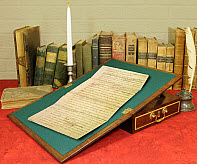 Imagine if you will, going to work one day where you had become known as the quiet one who hardly ever spoke out. On that day, you were appointed to a committee and that committee’s task was to prepare a major report which would set the direction of your company for years to come.
Imagine if you will, going to work one day where you had become known as the quiet one who hardly ever spoke out. On that day, you were appointed to a committee and that committee’s task was to prepare a major report which would set the direction of your company for years to come.
Daunting though that might seem, now, imagine being given a deadline of less than 3 weeks to compile that report.
Oh, it gets better.
The little committee tells you that YOU’RE in charge of the project. Oh, they’ll HELP but, YOU get to write it and THEY’LL look it over, maybe give you a little advice or make a change or two but it’s YOUR baby.
Feeling the pressure yet?
Here’s what they DON’T tell you but, somehow, you know it to be true; if it doesn’t work 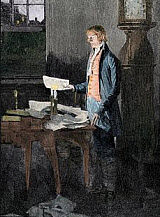 out…you, everybody on the committee, and everyone in your office are going to die.
out…you, everybody on the committee, and everyone in your office are going to die.
Well…What are you waiting for…Get to it!!
Essentially, for all sakes and purposes, this is what happened to one Thomas Jefferson in the summer of 1776.
Perhaps it’s best to let someone who was there, fill in the blanks. In 1822, Timothy Pickering wrote to John Adams and asked why it was that Jefferson, a young man of 33, was given the assignment to write the Declaration of Independence. Adams promptly penned a letter to Pickering to explain. You can read that letter by clicking here, and I hope that you will.
To set about writing what would become one of the most important documents in history, Jefferson found that working from his living quarters in the heart of Philadelphia was too distracting, and so he moved into the upstairs two rooms of the Jacob Graff home on the edge of town. There, besieged by flies from the stables across the road, Thomas Jefferson put pen to paper.
Every few days, Jefferson would take what he had written and ride his horse into Philadelphia to meet with John Adams and Benjamin Franklin at a pub so as to allow them to examine his work, and make suggestions. According to Adams, very few if any such 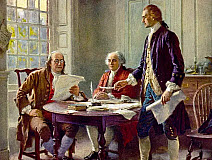 suggestions were ever made.
suggestions were ever made.
The City Tavern was a popular place for notables to meet as Jefferson, Franklin, Paul Revere and John Adams were frequently found there for food and drink, or as Adams referred to it, “a feast of reason and a flow of soul.”
The City Tavern was a half a mile from the Graff House, and between the two, was what became known as Independence Hall.
The Graff House was built in 1775, and the original structure went through many 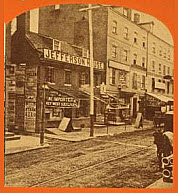 incarnations as shops, an inn, a print shop and the Tom Thumb Diner before being torn down in 1883. Photos of the original building served as the blueprints for rebuilding the structure at its original location for the nation’s Bicentennial in 1976. The original City Tavern was partially destroyed by fire on March 22, 1834, and was completely demolished by 1854. It too was reconstructed at its original location for the bicentennial.
incarnations as shops, an inn, a print shop and the Tom Thumb Diner before being torn down in 1883. Photos of the original building served as the blueprints for rebuilding the structure at its original location for the nation’s Bicentennial in 1976. The original City Tavern was partially destroyed by fire on March 22, 1834, and was completely demolished by 1854. It too was reconstructed at its original location for the bicentennial.
The City Tavern, aside from being the meeting place for Jefferson, Adams and Franklin was also the place where, in 1777, General George Washington first met with the Marquis de Lafayette who had traveled from France to join Washington’s army in the Revolutionary War. The Tavern was also the site of the first official celebration recognizing a year of our independence in 1777.
Jefferson was a man of substantial intellect, but also a man conflicted by his own ideals. He included in his original draft of the Declaration harsh language towards the institution of slavery, advocating for its abolishment and yet, Jefferson himself was a slave owner. That language was edited out of the Declaration of Independence because it was deemed that the southern colonies simply would not adopt it were that language to be left intact.
That removed passage, part of the indictment of King George III read as follows, “He has 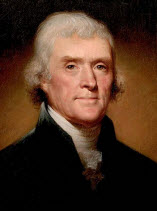 waged cruel war against human nature itself, violating its most sacred rights of life and liberty in the persons of a distant people who never offended him, captivating & carrying them into slavery in another hemisphere or to incur miserable death in their transportation thither. This piratical warfare, the opprobrium of infidel powers, is the warfare of the Christian King of Great Britain. Determined to keep open a market where Men should be bought & sold, he has prostituted his negative for suppressing every legislative attempt to prohibit or restrain this execrable commerce. And that this assemblage of horrors might want no fact of distinguished die, he is now exciting those very people to rise in arms among us, and to purchase that liberty of which he has deprived them, by murdering the people on whom he has obtruded them: thus paying off former crimes committed again the Liberties of one people, with crimes which he urges them to commit against the lives of another.”
waged cruel war against human nature itself, violating its most sacred rights of life and liberty in the persons of a distant people who never offended him, captivating & carrying them into slavery in another hemisphere or to incur miserable death in their transportation thither. This piratical warfare, the opprobrium of infidel powers, is the warfare of the Christian King of Great Britain. Determined to keep open a market where Men should be bought & sold, he has prostituted his negative for suppressing every legislative attempt to prohibit or restrain this execrable commerce. And that this assemblage of horrors might want no fact of distinguished die, he is now exciting those very people to rise in arms among us, and to purchase that liberty of which he has deprived them, by murdering the people on whom he has obtruded them: thus paying off former crimes committed again the Liberties of one people, with crimes which he urges them to commit against the lives of another.”
Later in his life, Jefferson wrote of the process that removed his desire to end the practice of slavery, that “the congress descended upon it like vultures.”
It took Jefferson all of 17 days to write the document, starting on June 17th 1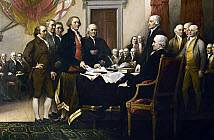 776 and a final version was presented to the 2nd Continental Congress on July 2nd upon which they voted and adopted on the 4th of July, 1776.
776 and a final version was presented to the 2nd Continental Congress on July 2nd upon which they voted and adopted on the 4th of July, 1776.
By that afternoon, a printer by the name of John Dunlap produced 200 copies of his broadside of the Declaration of Independence to be distributed through the states, and of those original copies, only 26 survive to this day. The original copies by Dunlap contained only two signatures, those of John Hancock and Charles Thomson as those were the only two to sign it that day. The final signature didn’t appear on the document for another five years. In our National Archives today, there exists but a single engrossed copy of the Declaration of Independence bearing all 56 names.
The Dunlap printed copies were distributed throughout the states, and one was rapidly sent to George Washington. Washington ordered that it be read aloud to his troops on July 9th, 1776.
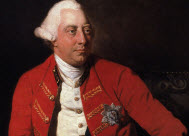 Another of the Dunlap copies was sent to King George III who said, “for daring and desperate is the spirit of those leaders, whose object has always been dominion and power, that they have now openly renounced all allegiance to the crown, and all political connection with this country.”
Another of the Dunlap copies was sent to King George III who said, “for daring and desperate is the spirit of those leaders, whose object has always been dominion and power, that they have now openly renounced all allegiance to the crown, and all political connection with this country.”
The British press of the day scoffed at the prospect of an independent United States, and believed that the rebellious colonists would soon rejoin the crown after the British victory in the battle of Long Island.
While neither King George III nor the British press took it seriously, our Founders and Framers certainly did. The document was a 1,320 word indictment of the King, and established a new independent nation that would still have to be won at war.
But what ever became of the hand written fair copy penned by Jefferson himself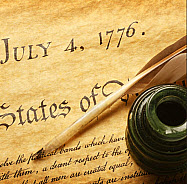 ? There are several theories. It could well have been destroyed in the printing process by John Dunlap, but if it indeed survived that, there is a very good chance that it was soon after deliberately destroyed during the debates in accordance with Congress’s secrecy rule. In any case, that fair copy in Jefferson’s hand has been lost to history, and has become the Holy Grail of American Independence.
? There are several theories. It could well have been destroyed in the printing process by John Dunlap, but if it indeed survived that, there is a very good chance that it was soon after deliberately destroyed during the debates in accordance with Congress’s secrecy rule. In any case, that fair copy in Jefferson’s hand has been lost to history, and has become the Holy Grail of American Independence.
Thomas Jefferson went on to many important roles in both American politics, and American history. He served as President Washington’s Secretary of State. He served as Vice President to John Adams, and became our third President in 1801. Under Jefferson, the Louisiana Purchase was made, Lewis and Clark explored this nation from coast to coast, and we fought our first war in a foreign land in Tripoli.
Despite all of his grand accomplishments, the offices he held, his founding of the University of Virginia, his work in science and philosophy, architecture, music, and horticulture, Thomas Jefferson maintained that his greatest achievement was the writing of the Declaration of Independence.
Just months before his death at the age of 83, Thomas Jefferson, ailing and unable to attend the invitation to celebrate our nation’s 50th Independence Day, wrote his regrets to the invitation’s sender, Roger Chew Weightman, the mayor of Washington, “all eyes are opened, or opening to the rights of man. the general spread of the light of science has already laid open to every view the palpable truth that the mass of mankind has not been born, with saddles on their backs, nor a favored few booted and spurred, ready to ride them legitimately by the grace of god. these are grounds of hope for others. for ourselves let the annual return of this day, for ever refresh our recollections of these rights and an undiminished devotion to them.”
to the invitation’s sender, Roger Chew Weightman, the mayor of Washington, “all eyes are opened, or opening to the rights of man. the general spread of the light of science has already laid open to every view the palpable truth that the mass of mankind has not been born, with saddles on their backs, nor a favored few booted and spurred, ready to ride them legitimately by the grace of god. these are grounds of hope for others. for ourselves let the annual return of this day, for ever refresh our recollections of these rights and an undiminished devotion to them.”
For all of his accomplishments, and achievements, when Jefferson died on July 4th, 1826, his home and all of his belongings had to be sold at auction to settle the enormous debt he had racked up in his declining years. His home, Monticello was finally purchased by a non-profit and opened to the public in 1954.
If your next project or report at work is still around in 244 years, kept in a sealed glass  container filled with inert gases meant to stall it’s decay, maintained at a constant temperature, not ever subjected to direct sunlight and lowered each night into a steel and concrete reinforced vault in one of the most secure buildings on Earth, well then, you’ve done a pretty good job.
container filled with inert gases meant to stall it’s decay, maintained at a constant temperature, not ever subjected to direct sunlight and lowered each night into a steel and concrete reinforced vault in one of the most secure buildings on Earth, well then, you’ve done a pretty good job.
Perhaps they’ll carve your likeness into the side of a mountain too but remember, Jefferson did it in just 17 days.
Copyright © Craig Andresen/thenationalpatriot.com 2020/ All rights reserved
*************************************************************************************************
For more political commentary please visit my RIGHT SIDE PATRIOTS partner Diane Sori’s blog The Patriot Factor to read her latest article Statues, History, and Misplaced Anger
************************************************************************************************
Tomorrow, Tuesday, June 30th, from 7 to 9pm EST, RIGHT SIDE PATRIOTS Craig Andresen and Diane Sori discuss ‘Statues, History, and Misplaced Anger’; ‘Jefferson – 17 Days To Immortality’; and important news of the day.
Hope you can tune in to RSP Radio at: https://streamingv2.shoutcast.com/right-side-patriots





Craig, that was a lot of history that I never heard about. I appreciate what you’ve done (and continue to do on other subjects). It has just occurred to me that Thomas Jefferson might have requested the original document be returned to him. It might be hidden away at Monticello or in his private papers. I will always be curious about that.
Thanks again! I love my country, and our Declaration of Independence inspires me every time I read it. God bless us all!
Craig, it’s amazing what a man can do when tasked with an almost impossible job. As much as I have studied all these years, this was “news” to me. What an amazing recounting of our historical document. Jefferson might not have ever known the value and virtue of his enormous task when he died, but had he not tried and succeeded, America might not be here today!!! I loved this!!!! Just Wonderful!!!
Fantastic read at best, history as it was and what made us the greatest nation on the planet!! I both enjoyed and on my wall. Super job!!